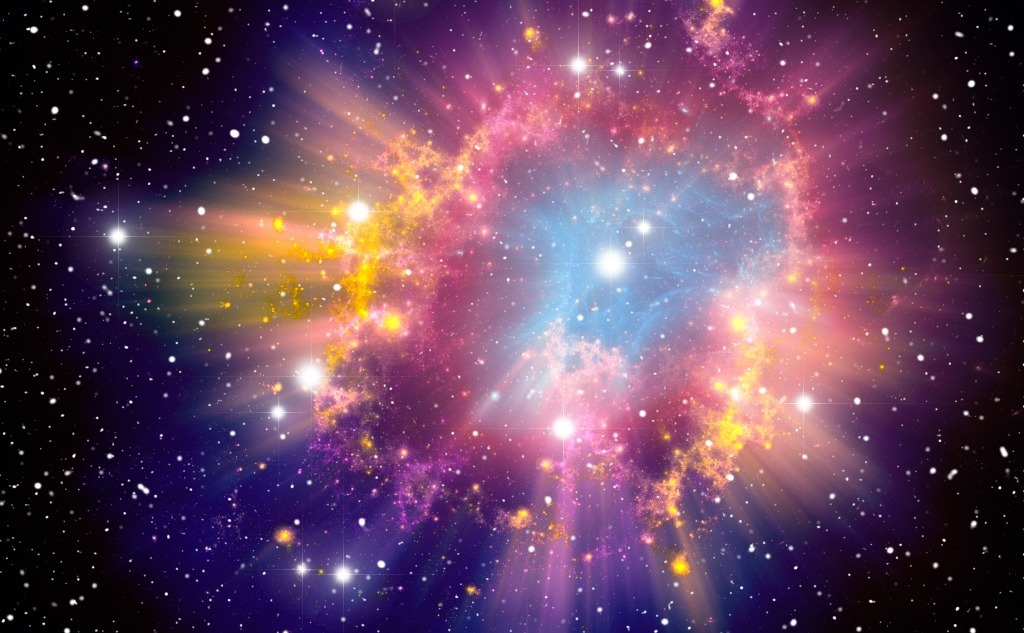Here are the 10 stars most likely to go supernova next:
- RS Ophiuchi
- 119 Tauri
- Pi Puppis
- Rigel
- Gamma Velorum
- Betelgeuse
- Antares
- Alpha Lupi
- Spica
- IK Pegasi
Supernovas are visible during the day for up to several weeks or months.
So if you want to learn all about which stars are most likely to supernova next, then you’re in the right place.
Let’s jump right in!
Stars and Supernovas
Stars are delicate machines, using perfect balances of gravity pushing in and nuclear power pushing out.
When a massive enough star runs out of nuclear fuel, gravity wins, and the star collapses on itself.
Now, a massive explosion happens, a supernova.
But, what is the next star to go supernova?
Supernovas emit tremendous energy.
In fact, a supernova would temporarily shine brighter than everything except the Moon in our sky.
Actually, it would even be visible during the day for up to several weeks or months. Now, that would be a true sight.
Unfortunately, supernovas in our region of the Milky Way only occur once every 50 to 100 years. Therefore, the science community is constantly trying and hoping to predict which nearby star will explode next.
So, here are the top 10 candidates for the next star to go supernova.
Keep reading!
#1 RS Ophiuchi
Nearly 4,000 light-years away in the constellation, Ophiuchus, RS Ophiuchi is a white dwarf nova system.
Plus, it’s in its late evolutionary stages. RS Ophiuchi is relatively close and prime to go supernova.
#2 119 Tauri
119 Tauri is 1,700 light-years away, in the constellation Taurus.
And, as one of the reddest stars seen with the naked eye, 119 Tauri is also 600 times the mass of our Sun and ready to explode.
#3 Pi Puppis
The next star to go supernova could be Pi Puppis. Constellation Puppis’ second brightest star is only 1,100 light-years from Earth.
Plus, Pi Puppis is a supergiant that has already consumed all of the hydrogens in its core.
#4 Rigel
The next star to go supernova could be the seventh brightest star in the sky, Rigel.
Actually, Rigel is part of a triple or quadruple star system.
Plus, at 860 light-years away in the constellation Orion, Rigel would put on quite a show.
#5 Gamma Velorum
Gamma Velorum lies 800 light-years away in the constellation, Vela.
And, as one of the brightest stars in the night sky, Gamma Velorum is part of a four-star system.
Now, Gamma Velorum has already shed its outer layers and is on the way to going supernova.
#6 Betelgeuse
One of the most notable stars in Orion, and the ninth brightest in the ski, is Betelgeuse. At 640 light-years away, Betelgeuse is a massive red giant star.
In fact, if Betelgeuse were our solar system’s star, it would extend beyond Jupiter’s orbit.
Plus, nearing the end of its life, Betelgeuse is expected to go supernova any day now.
#7 Antares
Scorpius’ brightest star, Antares, is possibly the next star to go supernova. Not to mention, this massive red supergiant is only 600 light-years away.
In other words, this explosion would create an unparalleled sight in our sky.
#8 Alpha Lupi
Constellation Lupus’ brightest star, Alpha Lupi, may be the next star to go supernova.
At a measly 460 light-years from Earth, Alpha Lupi has a mass of more than 10 Suns.
Alpha Lupi is locked and ready to go supernova.
#9 Spica
Spica is the Virgo constellation’s brightest star. It’s also a likely candidate for the next star to go supernova.
Plus, at only 240 light-years away, Spica would put on a display, possibly brighter than a full Moon.
Spica’s explosion would be seen in broad daylight for several weeks.
#10 IK Pegasi
Only 150 light-years from Earth, IS Pegasi is now a white dwarf.
In other words, the star is in the late evolutionary stages of its life.
Now, it’s only a matter of time before it explodes, giving us an incredible sight in the night and daytime skies.
